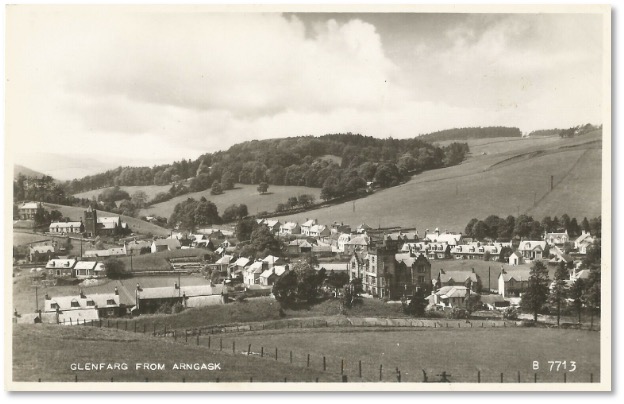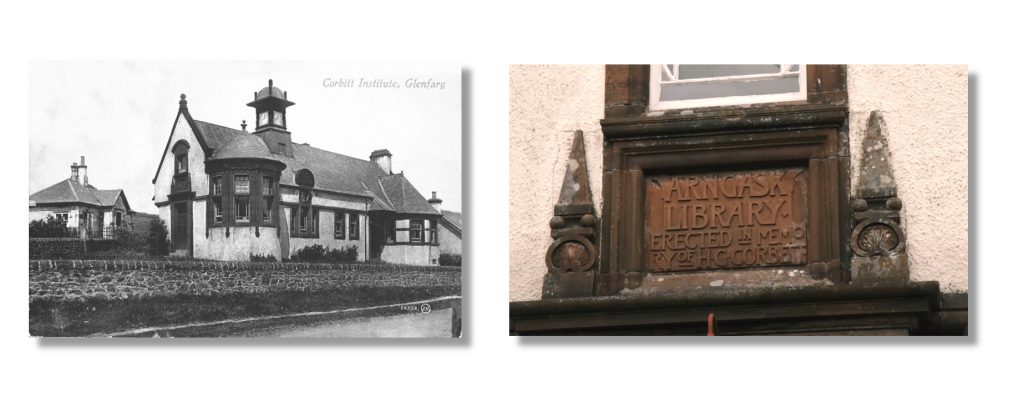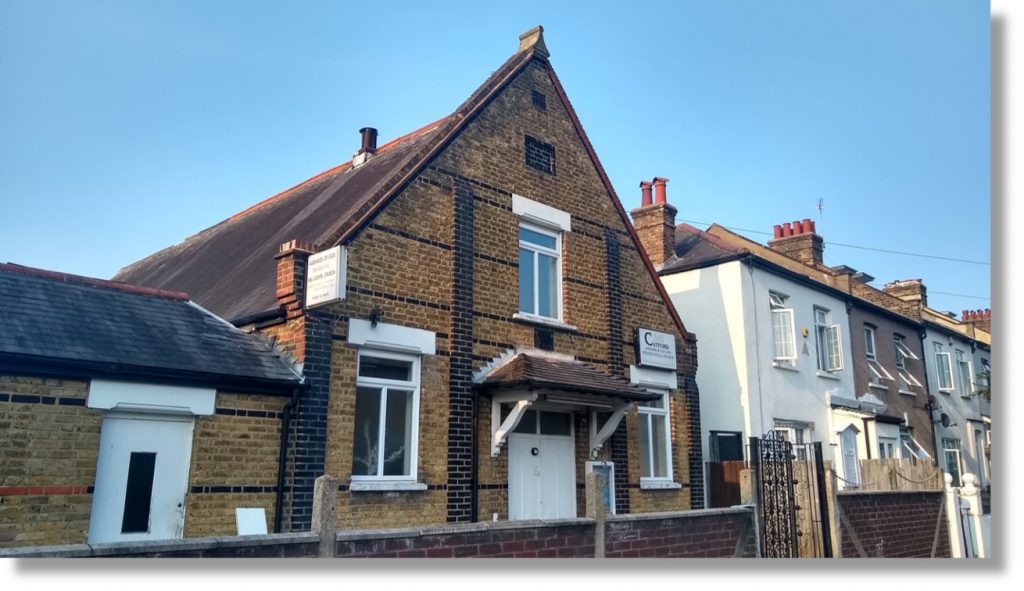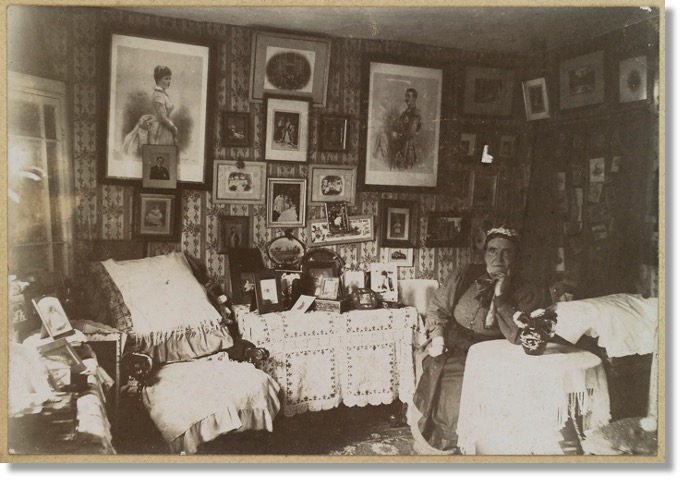“Commemorating a lost brother”
Background
Archibald Corbett named Glenfarg Road after a village in Perthshire, Scotland. It’s very near another village, Duncrievie, and they’re both in the parish of Arngask. The latter two places are also namechecked by Corbett in London, as is Fordel – a country estate nearby. Glenfarg itself gets its name from the river Farg which flows through the middle of the village.

The village of Glenfarg in Perthshire, Scotland
Corbett never lived in Glenfarg, so why did he want to commemorate the area? The answer is that his younger brother Harry had put down roots there, before dying of tuberculosis in his late 20’s. The family erected a memorial library to Harry in Glenfarg (incorrectly named the ‘Corbitt Institute’ in the postcard below left).

Building on Glenfarg Road began in 1900, which puts it (just) in the Victorian, rather than the Edwardian era (the Estate straddles both, being started in 1896 and completed in 1911). The houses had three bedrooms and a downstairs bathroom, and often a single-story bay window at the front.
The Early Residents: details from the 1911 Census
In April 1911 there were 786 people living on the street, together with nine people visiting. The census lists 168 houses, so the average number of people per house was 4.67. This figure puts Glenfarg in the top quarter of ‘most populous’ streets on the Estate (but still quite a lot less cramped than top-placed Sandhurst road which averaged 6.2 people per house).
89% of all households on the road included a married couple, which is exactly the same as the estate-wide average in an area which was very popular with families just starting out.
The Askems
One such young family were the Askems at No. 132 Glenfarg. Mary Ann Askem (born in Stratford, east London) was married to Edwin Charles, a native of Southwark who worked as a Compositor (arranging type for printing books and so on). They had two daughters, Winifred (6) and Frances (3); and Mary had just given birth to a son – another Edwin Charles, named after his father. Also in the house in April 1911 was Jane Harrell, a 49-year-old married lady who the Askems had employed as a ‘monthly nurse’ – a job we’ll look into a little later. Jane was the only person in Glenfarg who could possibly be classified as a live-in servant: other families might have had ‘day girls’ but there were no residential servants listed.
Popular names in the street
The Askems’ eldest daughter wasn’t the only Winifred in the street: there were four others under the age of 12. The most popular girl’s name however was Dorothy (8 instances), followed by Doris (6). Boys’ names followed the pattern on the rest of the Estate, with William being the most popular (8) followed by George and Henry (7 and 6 respectively). This echoed the fathers: there were 28 adult Williams living in Glenfarg; and the top female names were equally unsurprising – Emily (12) and Mary (9). “Morning Bill!” must have been a very common greeting in 1911!
A church
At the bottom of the street is the Catford AOG Pentecostal Church, which is easy to miss because it doesn’t stand out much from the houses surrounding it.

Assemblies of God Pentecostal Church near the corner of St Fillans Road
The land the church is built on was originally earmarked for the Estate’s Anglican place of worship, but the first Anglican vicar, a Mr Philpott, decided that the site was too small and persuaded the church authorities to purchase a larger, more central plot between Torridon and Ardgowan Roads. The much bigger St Andrews church still stands there today.
Jobs
Glenfarg again fits in with the overall pattern of the Estate when it comes to the jobs people did: the most popular profession was Clerk (12% of those in employment said they worked in an office).
Amongst the non-clerk jobs, some that stand out are those done by Frederick Noble at No. 112, who worked as a Human Hair Restorer; Alfred Brooks at No. 17 had the dubious pleasure of being a municipal Sewer Flusher; Ethel Stevens at No. 121 was an Underclothing Presser; and Florence Jones at No. 10 was a Cigar Finisher.
HISTORICAL CONTEXT: the Monthly Nurse
In 1911 the NHS was still a long way from being created, and if you’d just had a baby the chances were you’d have to rely on family and friends to help out in the first few weeks after the birth. But if you happened to be fairly well off, you might be able to afford to pay for a ‘Monthly Nurse’ like Jane Harrell, who cared for Mary Askem and her new son Edwin at No. 132.
The term comes from the 4 weeks that the nurse often spent ‘living in’ with the family.

Nurse Tremlow, a retired ‘Monthly Nurse to the gentry’ pictured in the early 20th century
The Monthly Nurse role continued for a few years after Midwives were given official status 1902 (women had had to fight for this recognition because politicians felt they would stop male doctors earning money from delivering babies).